CANADA 150 - Ontario - Clay
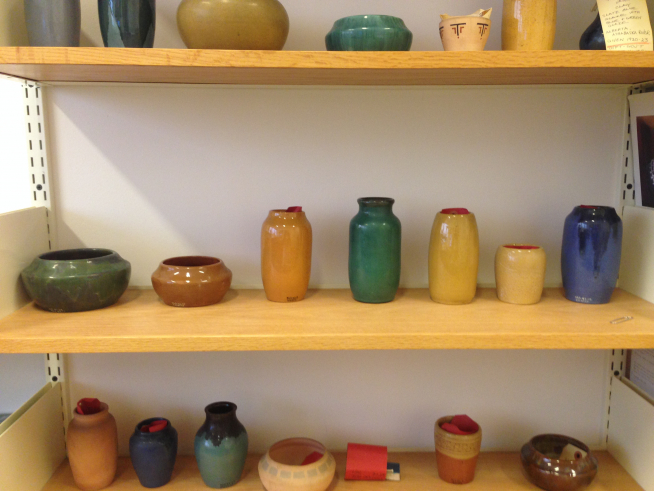
I have twenty vessels and one small tile in my office right now that are a little bit mysterious. Most of them are made of clay from Ontario, so I'm choosing to highlight them in my ongoing tour of Canada, through the Canadian Decorative Arts Collection. They are a set of vessels that was donated to the Royal Ontario Museum in the 1920s (between 1920 and 1923, according to our records). They were donated by the "Department of Mines," and contain no information about the artist or artists who made the pieces. Instead, the collection is meant to exemplify the different kinds of clays that you can find across Canada, and throughout Ontario. This one, below, is made of clay collected near Port Dover, Ontario. I do not know whether the gift came from the National or Provincial Department of Mines, and am not sure if I will be able to figure that out. I think it is more likely to have been a gift from the National Department, since the vessels are not solely Ontario focused (there are vessels made of clay from Alberta, Saskatchewan and Nova Scotia as well). However, most of them come from Ontario.
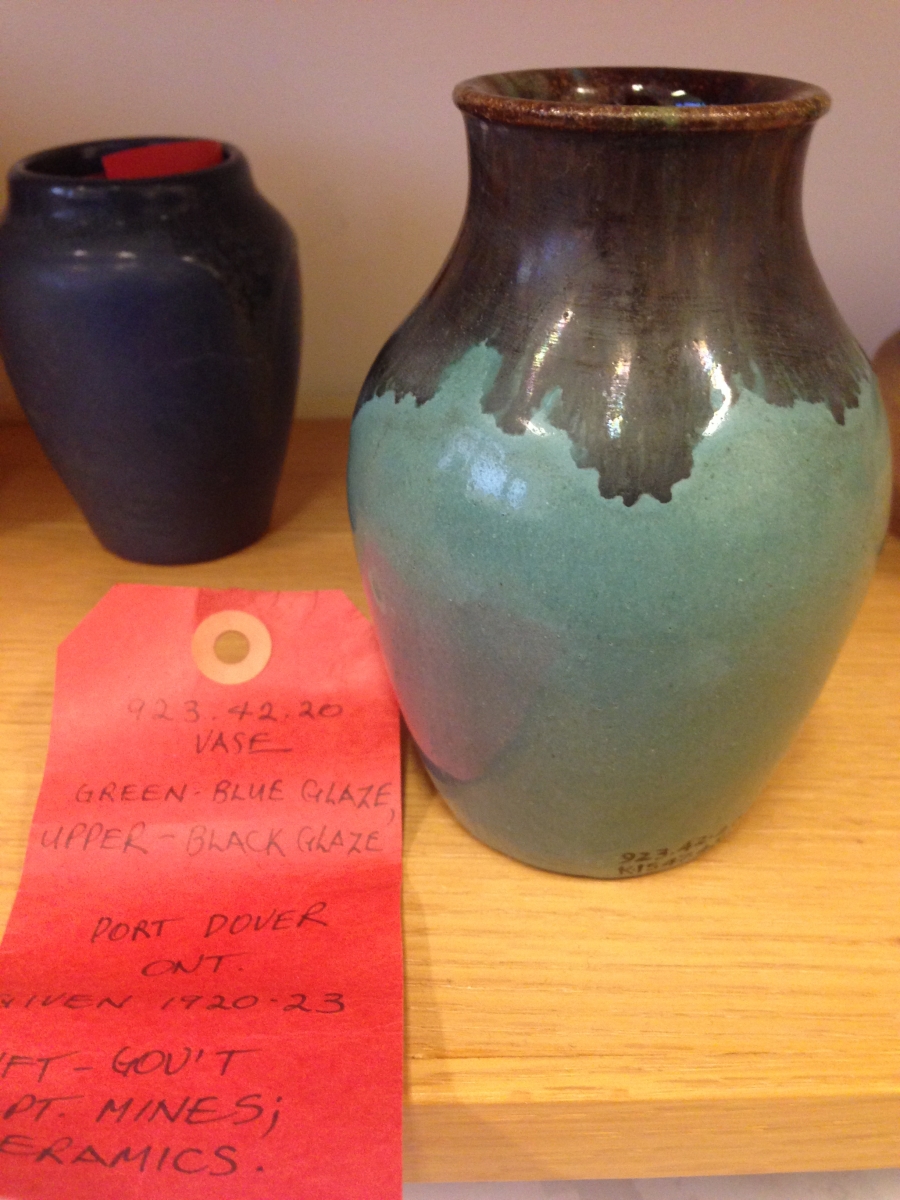
It is not unusual for museums to have pieces of pottery with little information about the maker of the piece in other departments at the ROM, especially in ones where archaeology is a guiding discipline (such as the galleries devoted to ancient civilizations). In the Canadian Decorative Arts collection and in decorative arts or craft research, it is more common to know the pottery studio or the factories that produced the work. This lineage is often important in the study of decorative arts, since it helps discern evolution in skill, style and design in the career of a single artist, or the growth of a factory or studio. My last post, about Blue Mountain Pottery, is an example of how a large collection of work that is known to be from a certain factory allows for us to see clear change and experimentation in forms and decoration. Where we do not have artistic lineage about ceramic works, we tend to have information about how a piece was used in the home. So, instead of artistic lineage, we might be able to learn information about how cooking styles changed and evolved, by examining different types of casserole dishes. This shifts the research perspective more towards a material culture focus, exploring objects in use, and their multiple meanings. But these little vessels in my office have no known maker, and no readily apparent use. What they do have is information about their source clay, and that is what I find fascinating and mysterious.
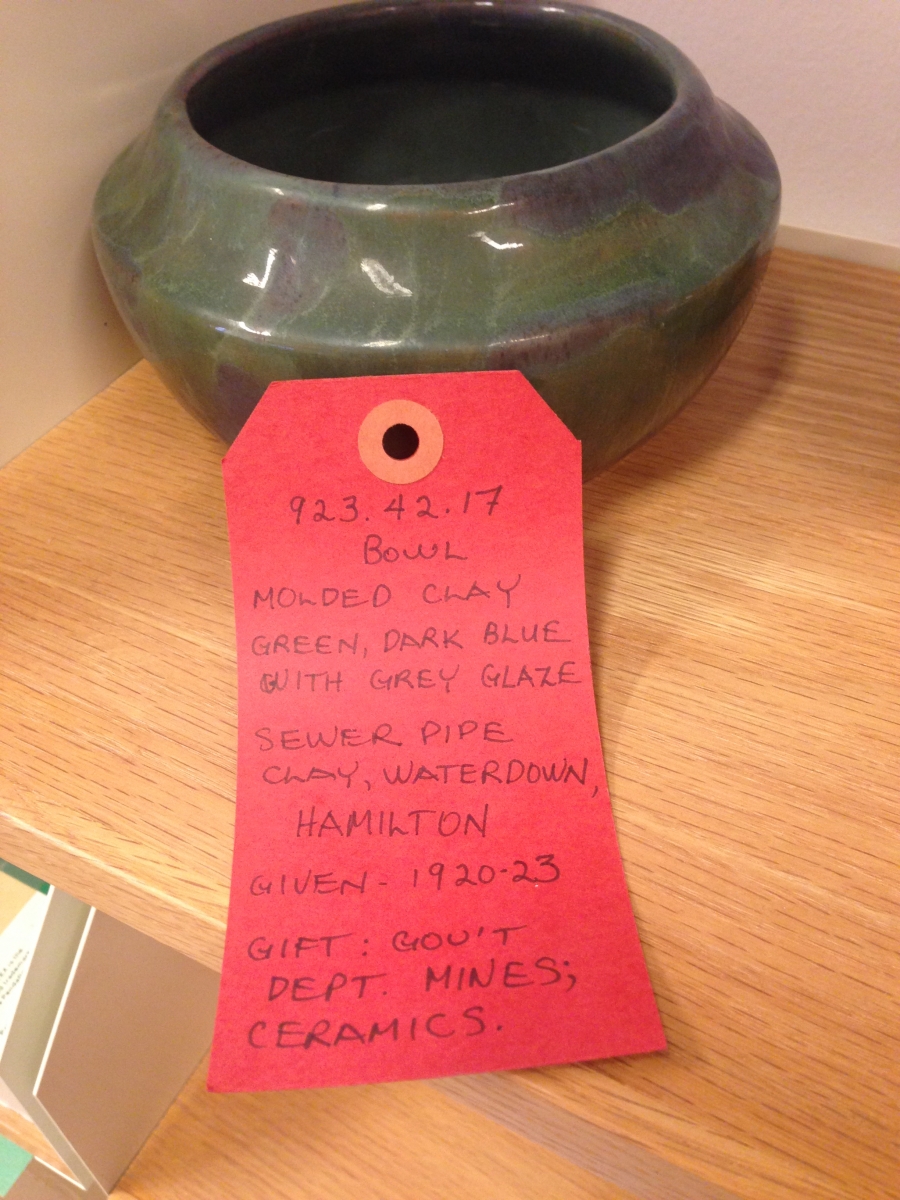
Was the Department of Mines trying to start a ceramics industry in Canada? The National Department of Mines was created in 1907, and was an early precursor of the Ministry of Natural Resources. This ministry, of course, manages use of forests, minerals and energy in Canada; the natural resources that we use to create our cities. In the early part of the 20th century, crafts were often seen as a possible source of income, so it would not surprise me if the Department of Mines had been trying to sort out whether there were reliable sources of clay that could be used for ceramic manufacture. Clay was well used by that point in Canadian settlement in constructing homes and businesses out of brick, and there were both large and small scale pottery producers by then as well. Were they hoping to ramp up the industry? Clay had, of couse been used for thousands of years before that in Ontario as well, by various First Nations groups (see this blog series at the ROM for more information about some of the ROM's collection of Wendat Pottery, and how it is interpreted in contemporary times by two artists).
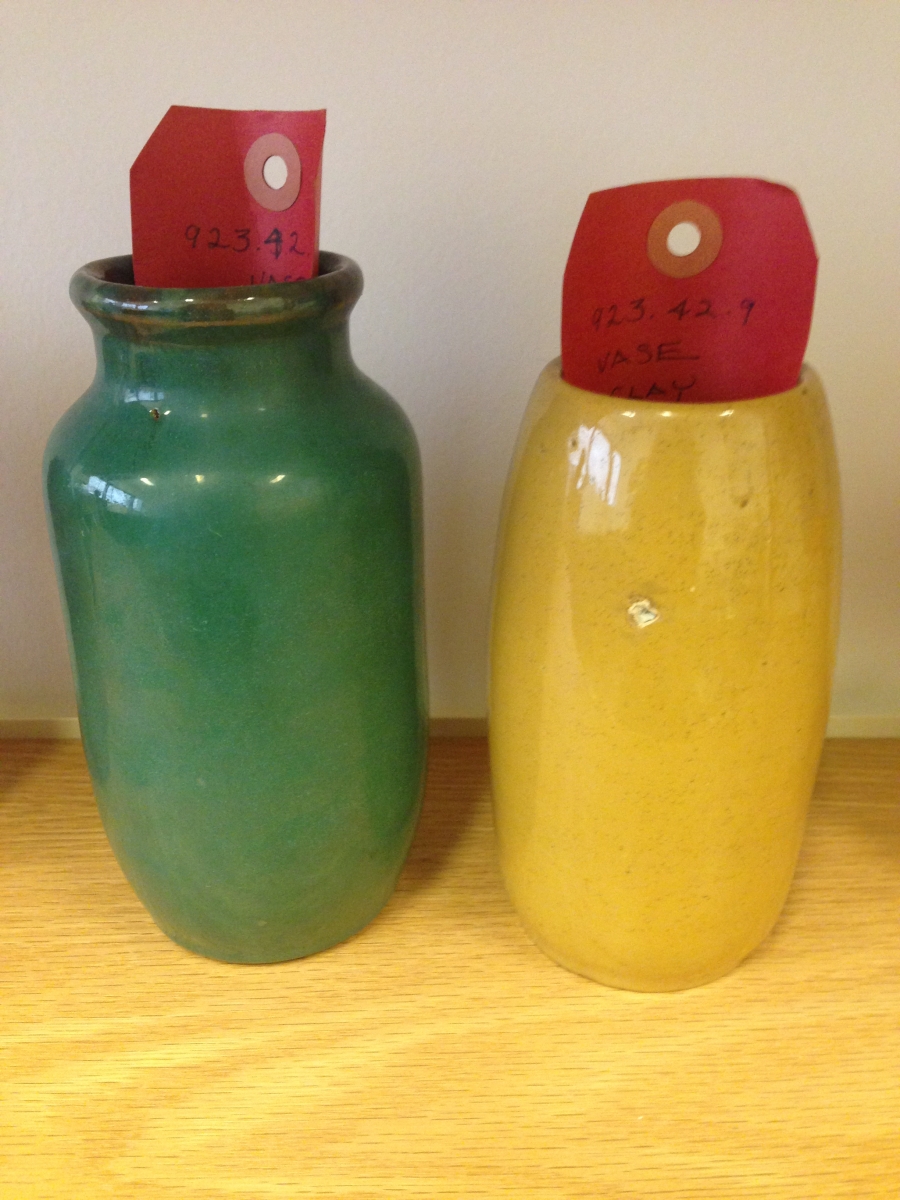
These green and yellow vases were made using clay gathered in the Don Valley in Toronto, according to their labels. This was, of course, a very well known source of clay in the Toronto area. The Don Valley Brickworks started in the late 1880s in Toronto, and produced bricks for most major Toronto landmarks, as well as Toronto homes and businesses, for almost 100 years. It has, in recent times, been re-invigorated as the environmental community centre Evergreen Brickworks. One of best things about Brickworks (other than their wonderful weekend market), in my opinion, is their educational programming for both children and adults. They have a strong emphasis on craft and food making and building in many of the programs at their site; this is not all that unusual for educational programs, especially those aimed at children. Where Brickworks feels different is that usually you know a bit more about the materials you are working with when you are there, than you would in other places. Things are a bit more raw and a bit less processed.
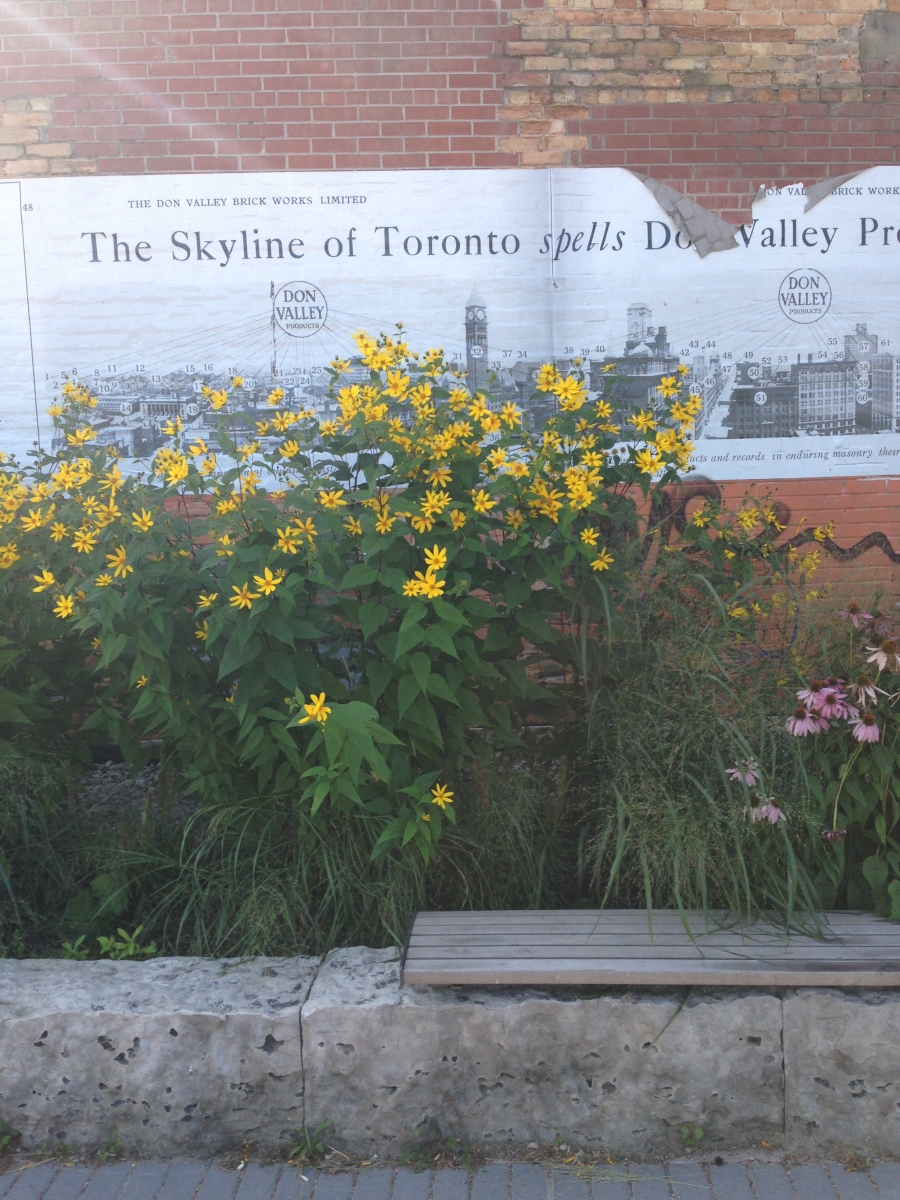
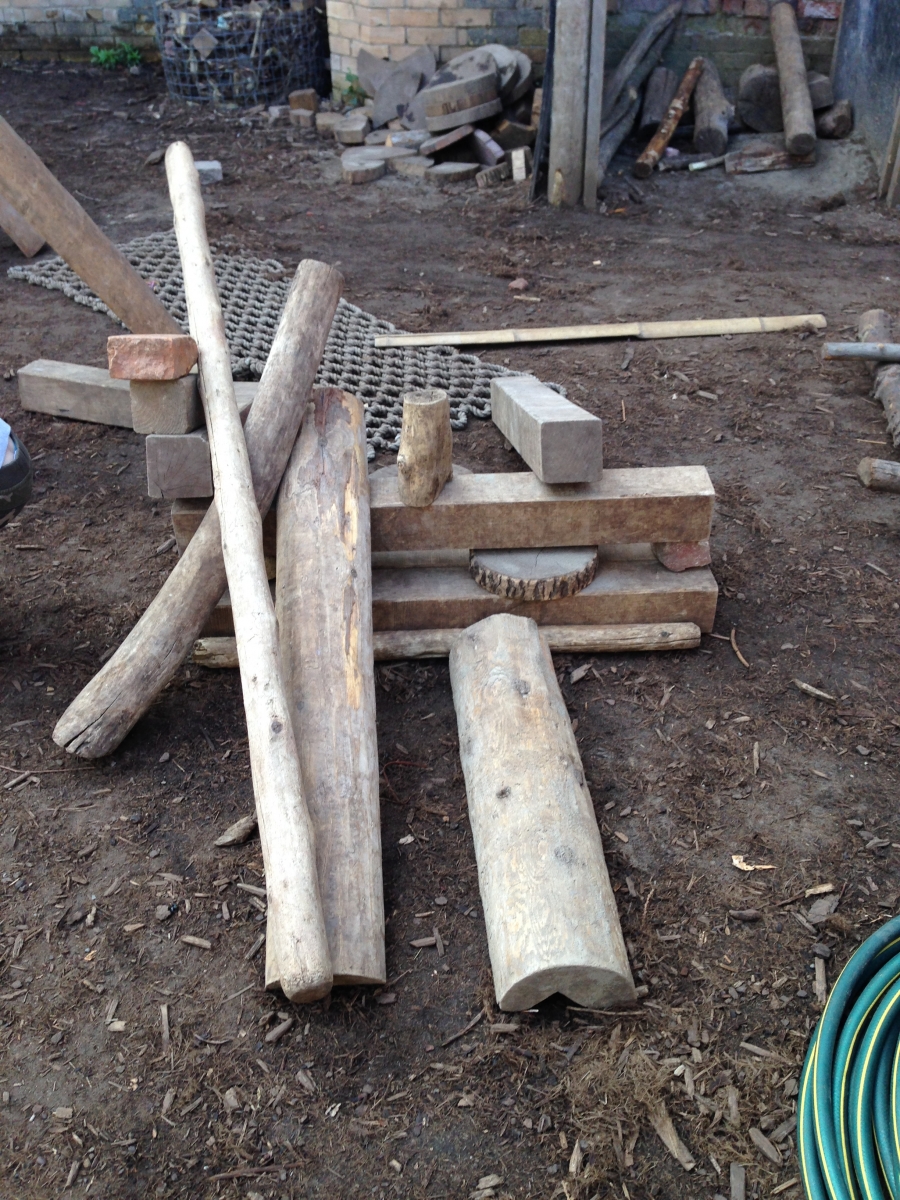
There is a lot of writing in our world about the benefits of eating locally produced food, and knowing more about the raw ingredients that go into what you eat. I think there are similar benefits to thinking about material culture in a local way, and knowing more about what you are using and where it came from. I am still sorting out how to think and write about these ceramic vessels in my office, but as I learn more about them, I think they can be tools to help people think about material culture a little bit differently. When you hold the vessel from Port Dover, and compare it to the weight of the vessel from the Don Valley, you notice that the clays are different weights. The Don Valley clays are considerably heavier, but the Port Dover clay does not feel weak in comparison. The vessels are all sized to a very human scale, as well. Not too big, not too small: they feel like objects that could be made by anyone, with some basic ceramic instruction. They are simply decorated too. They are friendly, and accessible pieces.
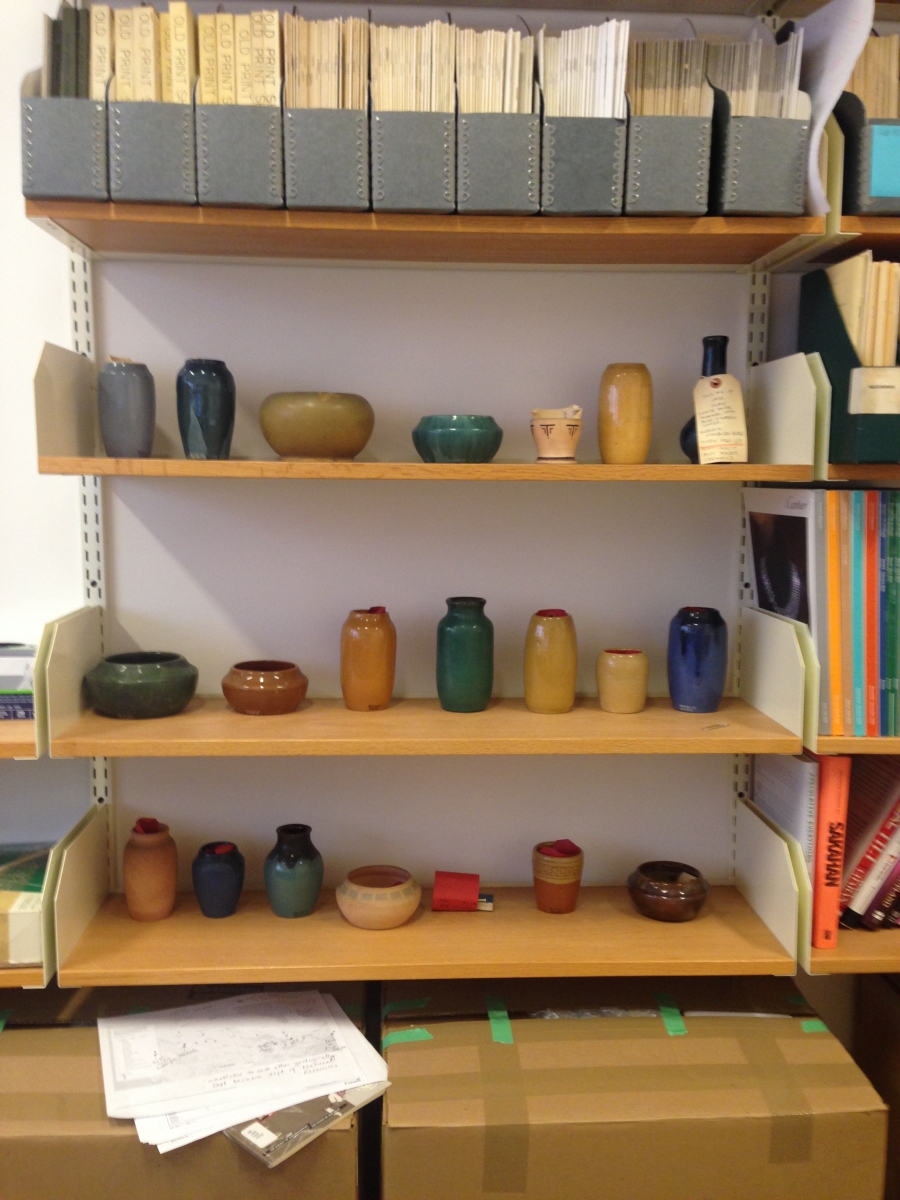
These small, unassuming vessels feel, to me, like they have the ability to make people think about digging their hands into dirt, and making things. In an increasingly digital world, I think that is a skill that we need to try to hold on to as much as possible.
